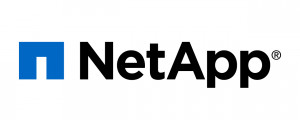This post is a recap of the interactive GovLoop Academy course, Operationalizing Hyperconverged Infrastructures.
Citizens want and expect better and faster capabilities from government agencies. In turn, IT departments are scrambling to meet new OMB 17-22 requirements, which mandate greater government efficiencies and smarter technology use.
In order to meet these growing citizen expectations and current and future organizational needs, agencies are turning to a new trend in IT infrastructure — hyperconvergence. Hyperconvergence is a software-centric platform that integrates compute, storage, networking, virtualization resources and other technologies in an easy to use hardware appliance. While traditional IT infrastructures are generally defined by hardware on multiple devices from multiple providers, hyperconverged infrastructures (HCI) are virtualized and delivered in a single standard server.
Essentially, this type of architecture allows for more agile deployments of workloads and applications, even as it lowers IT costs and improves operational efficiency. There are a number of benefits to integrating HCI, including better performance, reliability and functionality. The flexibility of such infrastructure also means services and applications can easily be scaled up or down.
Another important, unique feature of hyperconvergence is integrated disaster recovery. Through HCI, most applications can be restarted almost instantly. By using distributed data centers, agencies can preemptively avoid failures during and after natural disasters by keeping critical systems running.
Additionally, HCI solutions can be integrated into an agency’s existing hybrid cloud solution, eliminating the need to start from scratch and allowing for easy movement of workloads and data. By moving Test and DevOps functions to the cloud, for example, these processes are kept separate from the main network to avoid slowing the performance of critical applications.
Agencies can also take advantage of cloud bursting, where onsite servers handle a much larger load by using the public cloud to support temporary spikes in usage. Technologies like quality of service for mixed workloads can help ensure that applications don’t steal resources from one another — an issue commonly known as the “noisy neighbor.”
In short, hyperconvergence provides the benefits of a public cloud, while providing greater control and security.
There are five important requirements to consider when integrating HCI into your hybrid cloud strategy:
1. HCI can increase operational automation. Agencies are increasingly look for ways to automate their infrastructures, and HCI does just that for routine tasks and streamline management. Operations staff become more effective as they lower the amount of time required to repair and improve the overall quality of services.
2. HCI also helps operationalize cloud business processes. How an agency tracks resources and enforces budgets across hybrid clouds is critical to IT funding, and to an efficient use of the architecture. The same principles apply to HCI, which should be seamlessly integrated into cloud management business processes.
3. With HCI, you can ensure application availability and optimize performance. The main reason agencies implement new IT infrastructures is to support business applications that enable their mission. But applications serve no purpose unless they’re available and enable more productive business operations.
4. HCI provides both visibility and continuous infrastructure monitoring. At a glance, administrators can see that resources are performing as expected. And, an HCI solution capable of robust replication ensures recovery point and time objectives are easily met, thus lowering risk.
5. Finally, HCI saves money with a subscription pricing model. A subscription model turns capital expenses into operating expenses, greatly reducing an agency’s upfront costs. Plus, you can start small and grow as demand increases.
Ultimately, by integrating these HCI operational requirements into your cloud architecture, you can deliver cost-effective, flexible IT services to accomplish your agency mission. But you need a clear plan on how to actually introduce hyperconvergence at your agency. Check out the full GovLoop Academy course for best practices and strategies for operational success.







Leave a Reply
You must be logged in to post a comment.